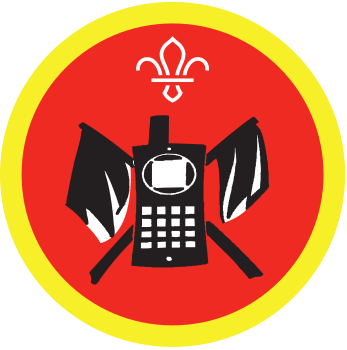Practice sending an email
You’ll need
- Slips of paper with your email address and the task.
- Everyone will need to use a device with internet and email access outside the meeting.
Before you begin
- You must not use personal email addresses for this activity.
- Use an email address which is related to the name of your group – if you don’t already have one, you can set one up quickly (and for free) with a number of providers including Gmail, Outlook, and Yahoo.
- Ideally, everyone in your leadership team should be able to access the email account. At least two members of the leadership team must be able to access it.
- You may want to talk to parents or guardians about this activity so that you can explain what people need to do, recommend that the parent or guardian supervises, and offer some helpful tips.
The activity
- Give everyone a slip of paper with your group’s email address on, and details about the task they need to complete with their email.
- You can pick your own task – we’ve included some suggestions below.
- Everyone should take the paper home, and send an email to the address. They should ask to use the email account of someone who’s old enough, like a parent or guardian.
- It’s useful to give people a deadline, such as two weeks after you handed out the paper.
Tasks
- Write a short story or poem, and send it by email. This could also count towards the Our Skills Challenge Award.
- Take photos on a trip, camp, or other event, and send the best 10 by email. This could also count towards the Photographer Activity Badge.
- List some activities you’d like to try in the future, and send it by email.
Getting computer access
If anyone isn’t able to access a computer or smartphone at home, there are other places they could go:
- They could go to the local library for internet access.
- They could ask to use the computer at school.
- They could use the computer with a friend – they could both send their emails at one person’s house.
- The person leading the activity could bring a device to the meeting, and allow people to use it if they need to.
Reflection
This activity was all about communication. Was it hard to communicate by writing, rather than talking to someone? What did you need to know to be able to communicate with someone by email? When might email be a good way of communicating?
This activity also allowed you to be independent. Have you sent an email before? Did you decide how to start and end your email? How can you be independent online while making sure you stay safe? Did you have to be independent and responsible to look after the email address you needed?
Safety
All activities must be safely managed. You must complete a thorough risk assessment and take appropriate steps to reduce risk. Use the safety checklist to help you plan and risk assess your activity. Always get approval for the activity, and have suitable supervision and an InTouch process.
- Online safety
Supervise young people when they’re online and give them advice about staying safe. Take a look at our online safety or bullying guidance. The NSPCC offers more advice and guidance, too. If you want to know more about specific social networks and games, Childnet has information and safety tips for apps. You can also report anything that’s worried you online to the Child Exploitation and Online Protection Command. As always, if you’ve got concerns about a young person’s welfare, including their online experiences, follow the Yellow Card to make a report.
People can use any assistive technology they need.
All Scout activities should be inclusive and accessible.
